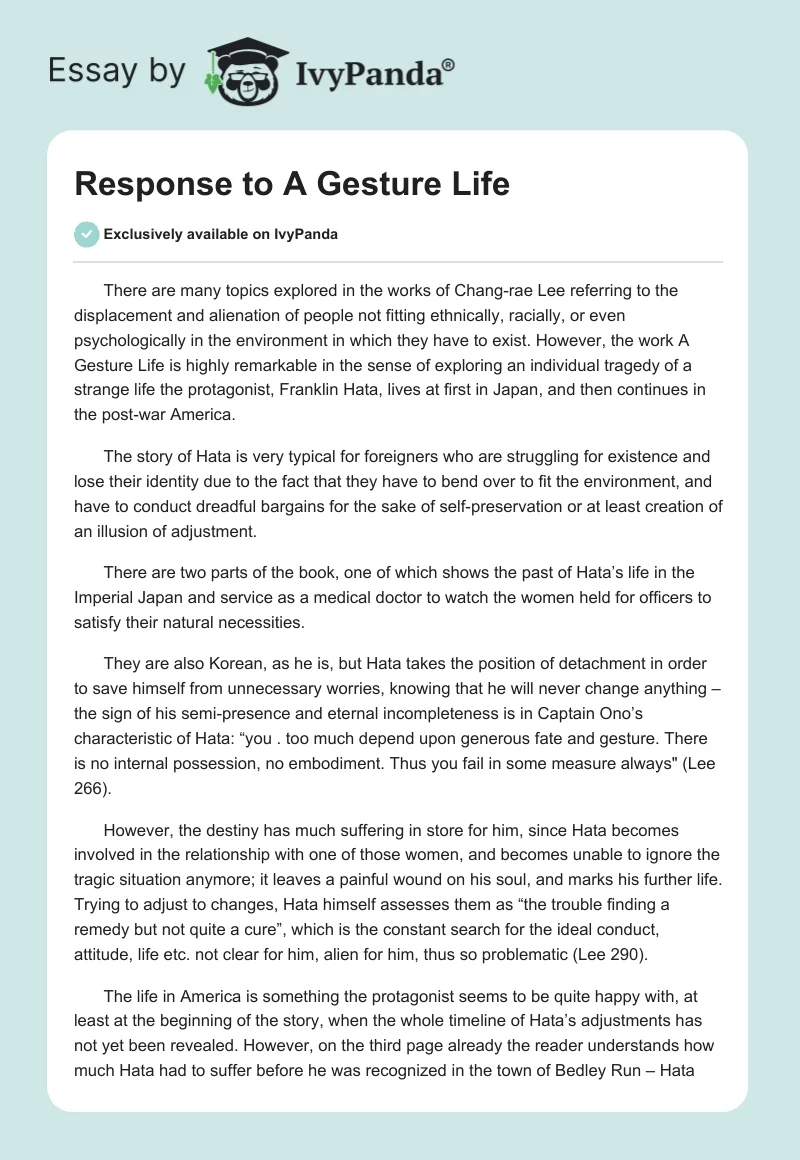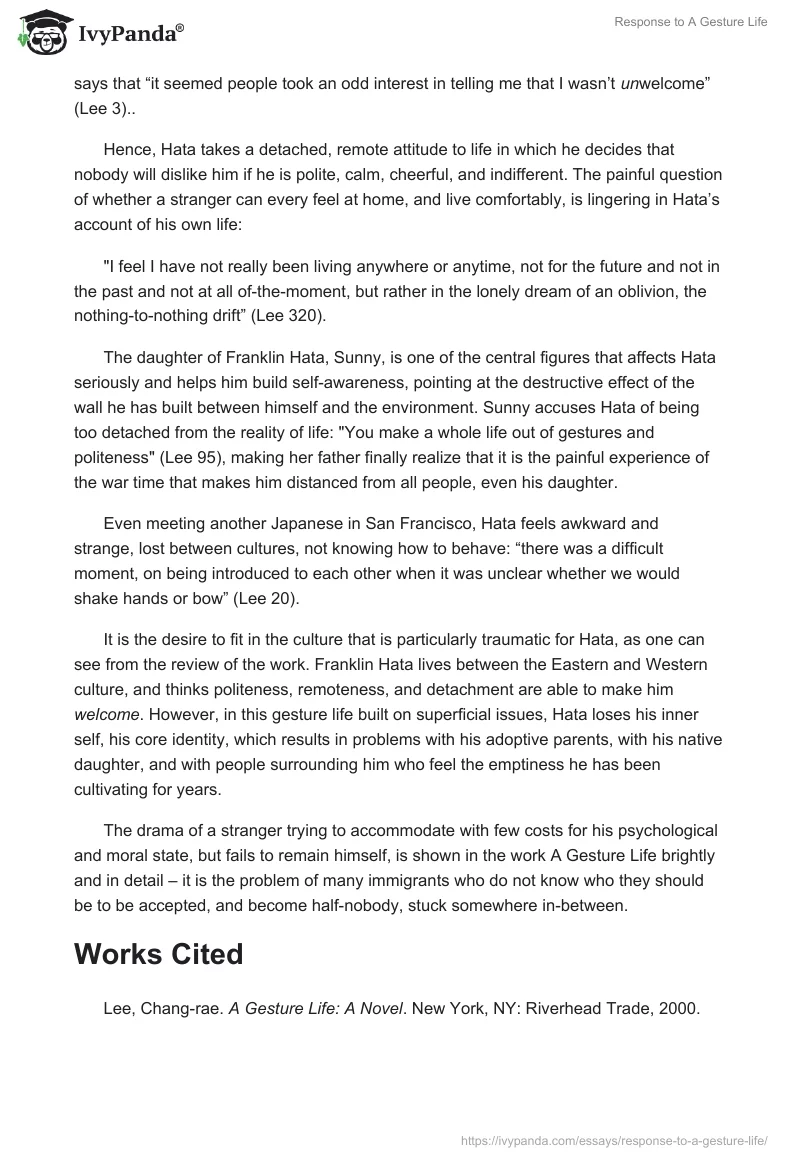There are many topics explored in the works of Chang-rae Lee referring to the displacement and alienation of people not fitting ethnically, racially, or even psychologically in the environment in which they have to exist. However, the work A Gesture Life is highly remarkable in the sense of exploring an individual tragedy of a strange life the protagonist, Franklin Hata, lives at first in Japan, and then continues in the post-war America.
The story of Hata is very typical for foreigners who are struggling for existence and lose their identity due to the fact that they have to bend over to fit the environment, and have to conduct dreadful bargains for the sake of self-preservation or at least creation of an illusion of adjustment.
There are two parts of the book, one of which shows the past of Hata’s life in the Imperial Japan and service as a medical doctor to watch the women held for officers to satisfy their natural necessities.
They are also Korean, as he is, but Hata takes the position of detachment in order to save himself from unnecessary worries, knowing that he will never change anything – the sign of his semi-presence and eternal incompleteness is in Captain Ono’s characteristic of Hata: “you . too much depend upon generous fate and gesture. There is no internal possession, no embodiment. Thus you fail in some measure always” (Lee 266).
However, the destiny has much suffering in store for him, since Hata becomes involved in the relationship with one of those women, and becomes unable to ignore the tragic situation anymore; it leaves a painful wound on his soul, and marks his further life. Trying to adjust to changes, Hata himself assesses them as “the trouble finding a remedy but not quite a cure”, which is the constant search for the ideal conduct, attitude, life etc. not clear for him, alien for him, thus so problematic (Lee 290).
The life in America is something the protagonist seems to be quite happy with, at least at the beginning of the story, when the whole timeline of Hata’s adjustments has not yet been revealed. However, on the third page already the reader understands how much Hata had to suffer before he was recognized in the town of Bedley Run – Hata says that “it seemed people took an odd interest in telling me that I wasn’t unwelcome” (Lee 3)..
Hence, Hata takes a detached, remote attitude to life in which he decides that nobody will dislike him if he is polite, calm, cheerful, and indifferent. The painful question of whether a stranger can every feel at home, and live comfortably, is lingering in Hata’s account of his own life:
“I feel I have not really been living anywhere or anytime, not for the future and not in the past and not at all of-the-moment, but rather in the lonely dream of an oblivion, the nothing-to-nothing drift” (Lee 320).
The daughter of Franklin Hata, Sunny, is one of the central figures that affects Hata seriously and helps him build self-awareness, pointing at the destructive effect of the wall he has built between himself and the environment. Sunny accuses Hata of being too detached from the reality of life: “You make a whole life out of gestures and politeness” (Lee 95), making her father finally realize that it is the painful experience of the war time that makes him distanced from all people, even his daughter.
Even meeting another Japanese in San Francisco, Hata feels awkward and strange, lost between cultures, not knowing how to behave: “there was a difficult moment, on being introduced to each other when it was unclear whether we would shake hands or bow” (Lee 20).
It is the desire to fit in the culture that is particularly traumatic for Hata, as one can see from the review of the work. Franklin Hata lives between the Eastern and Western culture, and thinks politeness, remoteness, and detachment are able to make him welcome. However, in this gesture life built on superficial issues, Hata loses his inner self, his core identity, which results in problems with his adoptive parents, with his native daughter, and with people surrounding him who feel the emptiness he has been cultivating for years.
The drama of a stranger trying to accommodate with few costs for his psychological and moral state, but fails to remain himself, is shown in the work A Gesture Life brightly and in detail – it is the problem of many immigrants who do not know who they should be to be accepted, and become half-nobody, stuck somewhere in-between.
Works Cited
Lee, Chang-rae. A Gesture Life: A Novel. New York, NY: Riverhead Trade, 2000.


